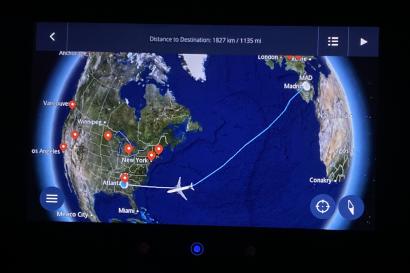Upon coming to Spain, I would see some TikToks on my “For You Page” with many things about Spain and most of them were about places that I should go visit. I pretty much had an idea of what I was getting myself into but seeing a video through a screen is nothing to a personal experience. I will provide some of the culture shocks I experienced, so upon arrival there won’t be too much of a shock!
Some of the Cultural Differneces:
- Meal Times: Upon my arrival the first thing I questioned was “What should I eat?," since back at home I would usually eat lunch around 12 p.m. and dinner around 6 p.m. One day I was really hungry and decided I should go grab something to eat down at the Plaza Mayor which is like a 15 min walk. Every restaurant I went to told me that the kitchen wa a closed and they are only serving drinks. Which confused me because it was dinner time, my dinner time. However, that’s when I learned that many restaurants don’t open their kitchens until 8 p.m. because turns out that dinner is typically around 9PM or later; and their lunch is typically around 2 p.m. bits it’s no ordinary lunch but a big one.
2. Socializing: I noticed that Spaniards tend to have a somewhat more of a relaxed attitude towards time and prioritize socializing, which I didn’t think much of until two ladies were like in the middle of the street on a sidewalk island not crossing on green and just chatting away like it’s not big deal. They tend to spend more time with friends and family during meals or gatherings, but do speed walk everywhere, they are so fast.
3. Language: Although Spanish is spoken widely, especially in urban areas, there are still some language barriers in how the use the personal pronoun vosotros instead of nosotros. But they don’t call Spanish: Español instead they call it castellano. There are other languages in Spain that are a mix with other languages like Catalan, Galego, Asturiano, Vasco, Valenciano, etc.
4. Siesta: This one is my personal favorite and one I wish that we can adopt this in the U.S., which is siesta time. Though it’s not as common as it’s used to be, in Salamanca we still have it and love it, it’s a concept of a mid-afternoon break and even some shops/businesses close for a few hours from 2 p.m. - 5 p.m.
5. Personal space and greetings: Something that I really really noticed was the amount of Public Display of Affection (PDA) and tend to be more physically and expressive. Sometimes they may stand a little closer during a conversation than what many are accustomed to be. Another example would be in how their greeting involve kisses on the cheeks amounts friends and family
Adapting to these cultural differences might take time but can also be a rewarding experience, offering a chance to embrace a new way of life and broaden one's perspective.

Ashley Carrasco-Hernandez
Hola! I am Ashley Carrasco-Hernandez. I am a first-generation student studying at the University of Redlands. I enjoy painting, watching movies (Fav Movie: Corpse Bride), going to the beach, stargazing, sleeping, and trying new foods!





